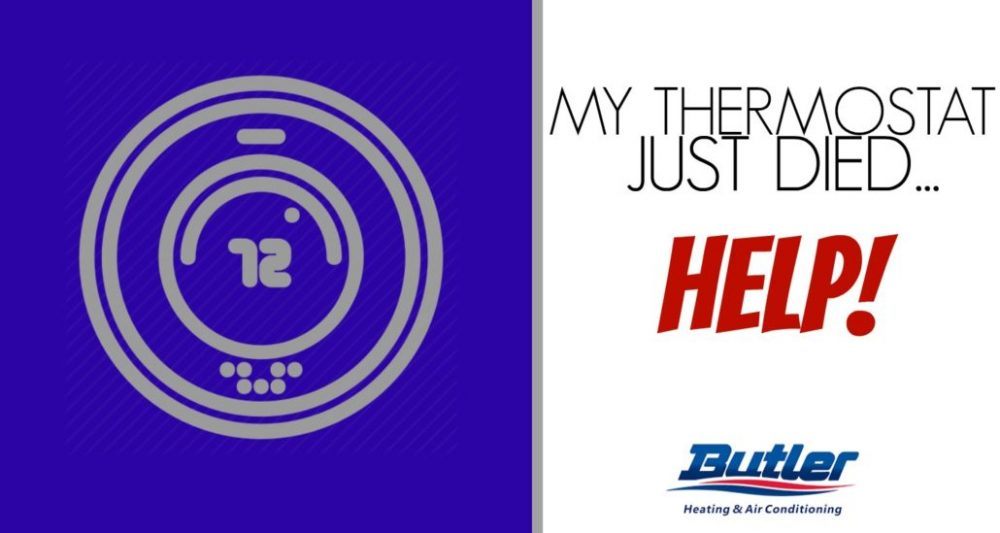My Thermostat Stopped Working – HELP!

A dysfunctional HVAC system can often cause a lot of discomfort in a home. Whether it’s an unbearable cold temperature or a sticky warm breeze, we rely on our heaters and air conditioners to keep our indoors as comfortable as possible. But there are times when these appliances don’t deliver the kind of satisfaction we are looking for. Often the cause behind this is a faulty thermostat.
Troubleshoot Your Thermostat
Here are some easy to follow steps to help you troubleshoot your home thermostat:
Change the thermostat batteries.
There are a number of different thermostats available in the market, so before you go ahead and wrench out the panel in your wall, make sure you know where the batteries are located. Modern thermostats or “smart thermostats” don’t come installed with batteries, so you might need to call in an expert. However, most systems still run off of batteries. A simple replacement of the worn out cells can have your home feeling as snug and cozy as ever.
Thoroughly clean thermostat.
As with most electrical appliances, dust and dirt can collect in the interior, causing them to display inaccurate readings. Using a soft dry brush or cloth, it is important to regularly clean your thermostat and all the delicate components inside, like the coils and contact panels. It is important to remember that these devices are electrical and even a small amount of water could cause the device to malfunction, so stay away from damp cloths and wet brushes.
Try moving the location of thermostat.
While most people overlook this facet of proper thermostat care, it is one of the most important things to remember when installing a thermostat. The device needs to be placed in a cool area where external heat or sunlight cannot affect its reading. Placing the thermostat near a furnace will force it to read the temperature of the room as higher than it really is and will accordingly send wrong commands to the HVAC system in your home. Similarly, if the thermostat is placed near an air conditioner, its readings will be inaccurate and it will trigger premature blasts of warm air into your home.
Balance your thermostat.
Those that have invested in a smart thermostat or modern devices do not have to worry about leveling their thermostats, but for those with mechanical thermostats it is one of the most common causes of misreadings. Because most of the older thermostats have a mercury switch in them, they need to be perfectly level when installed. A slight tilt, either way, could result in an uncomfortable experience at home.
Adjust the anticipator.
If you don’t know what an anticipator is, open up the cover of the thermostat and look for a metal tab that sits on a scale which is usually marked as “shorter” and “longer”. It can be set to “longer” when the heat cycle continuously switches on and off, or when the furnace doesn’t seem to be reaching the preferred temperature. Changes can be made if the temperature is still not comfortable.
If all these steps prove ineffective, you can always call in the experts and have our Dayton HVAC team handle any problem in installation, replacement, temperature control, and any other HVAC system issue. Contact Butler Heating and Air Conditioning today!

